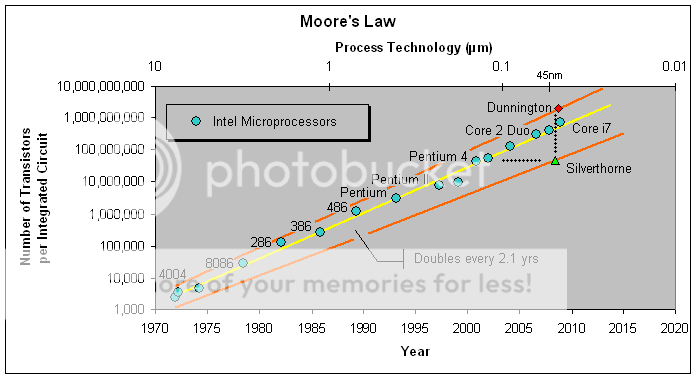Ok, then I think the Wikipedia article on Moore's law should be updated, because that's not obvious from reading it.
This the data upon which Moore originally published and based his observations:
What Moore noticed, and was correlating to a log-linear fit, was the the minimum in the price/component (xtor) curve decreased over time (that is the top graph) while simultaneously moving to the right (the number of xtors per IC).
This meant that while the price minimum decreased year after year, the price minimum also required the IC to have higher and higher number of components so as to enable that price minimum. (the bottom curve)
What makes this be the case is that there are competing cost efficiencies involved in any IC design in regards to die-size, development cost, and manufacturing yields.
This results in a range of chip sizes that are acceptable for making profit on any given node:















